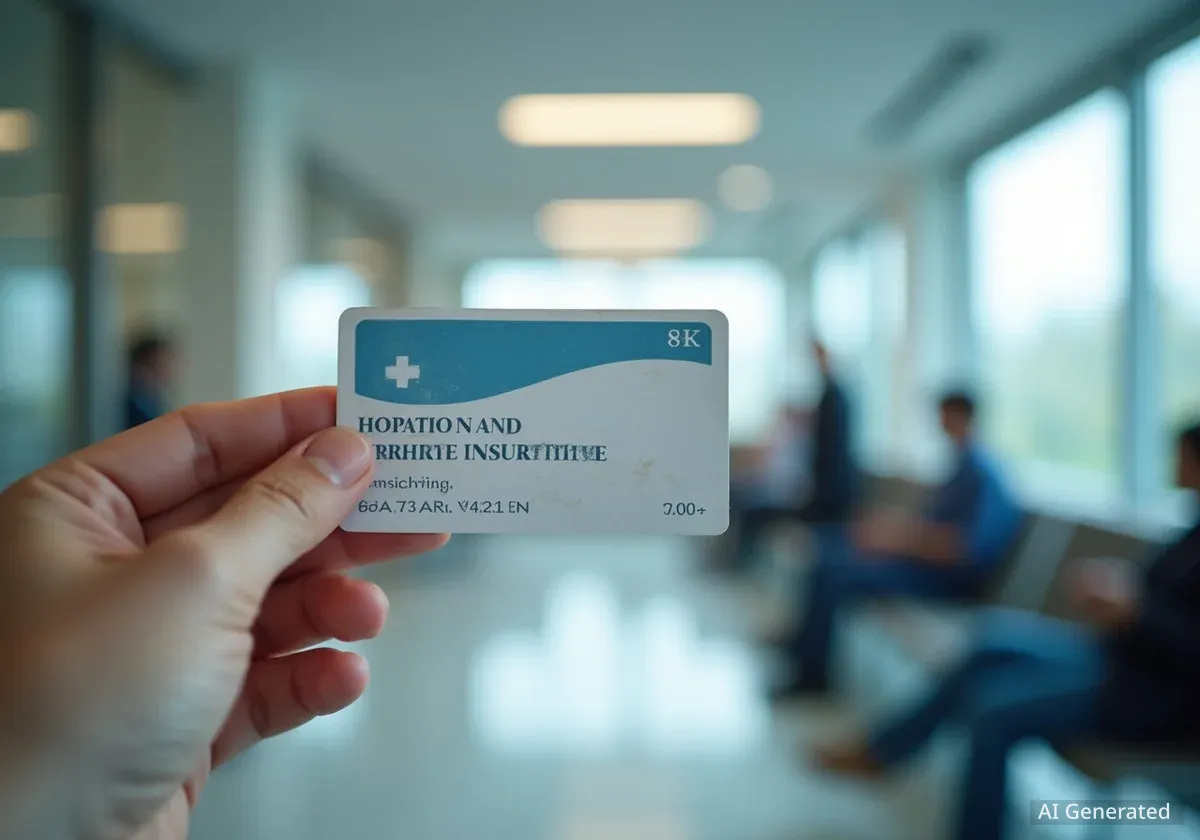Residents and small businesses in New York are preparing for significant increases in health insurance costs. State regulators have approved premium rate hikes of 7% for the individual market and 13% for the small group market, continuing a trend of rising healthcare expenses. These increases are driven by a combination of expiring federal subsidies and the high underlying cost of medical care in the state.
Key Takeaways
- New York's Department of Financial Services approved a 7% rate increase for individual health plans and a 13% increase for small business plans.
- The expiration of federal enhanced premium tax credits at the end of 2025 is a primary factor driving the rate hikes.
- Small businesses are particularly affected, with rising costs pushing healthier employers out of the market, which in turn raises prices for those who remain.
- Changes to federal funding for New York's Essential Plan could remove coverage for approximately 450,000 low-income residents.
Federal Subsidies and Their Impact
A major factor behind the anticipated premium increases is the scheduled expiration of federal financial assistance. Enhanced premium tax credits, which were expanded during the pandemic under the American Rescue Plan and later extended by the Inflation Reduction Act, are set to end in 2025 unless Congress acts to renew them.
These tax credits have made health insurance more affordable for millions of Americans, including about 250,000 New Yorkers who purchase coverage through the individual market. The Department of Financial Services (DFS) identified the potential loss of these subsidies as a key reason for approving the higher rates.
According to an analysis by Governor Kathy Hochul's administration, a couple could see their monthly premiums rise by an average of $228 if these credits expire. This sharp increase could force many to drop their coverage, reducing the number of healthy individuals in the insurance pool and driving up costs for everyone else.
By the Numbers
The expiration of federal tax credits could lead to an average monthly premium increase of $228 for a couple in New York, according to state government calculations.
State Approves Significant Rate Hikes
Each year, insurance companies must request approval from the New York Department of Financial Services to raise their premium rates. For the upcoming year, the agency approved a 7% increase for the individual market and a more substantial 13% increase for the small group market, which serves businesses with fewer than 100 employees.
While these approved increases were lower than what insurers initially requested, they represent a continuation of the upward trend in healthcare costs. A spokesperson for the DFS stated that the agency works to balance the affordability of plans with the financial stability of the insurance companies.
Policy experts note that while federal policies play a role, the fundamental issue remains the high cost of medical services in New York. Elisabeth Benjamin, Vice President of Health Initiatives at the Community Service Society, emphasized this point.
"If you aren’t controlling your health care costs, health insurance premiums are going to rise," Benjamin stated, suggesting the state should increase its scrutiny of hospital pricing.
Small Businesses Face a 'Death Spiral'
The 13% rate hike for the small group market is expected to place immense pressure on small businesses across the state. The Fiscal Policy Institute, an Albany-based think tank, has warned that this market is in a potential "death spiral."
This cycle occurs when rising premiums cause businesses with younger, healthier employees to seek cheaper coverage alternatives outside the traditional market. As healthy groups leave, the remaining pool of insured individuals becomes older and sicker on average, which forces insurers to raise premiums even further to cover the higher medical costs.
Michael Kinnucan, the health policy director at the Fiscal Policy Institute, explained the dangerous feedback loop.
What is a 'Death Spiral'?
In insurance, a "death spiral" describes a situation where rising premiums lead healthy individuals to drop coverage. This leaves a sicker, more expensive group to insure, which in turn forces premiums even higher, causing more healthy people to leave. This cycle can eventually make the insurance market unsustainable.
"The more healthy people leave, the more expensive it is to stay, the more the incentive there is to leave," Kinnucan said. "Only the sickest people stay, so prices go up more." This problem is particularly acute in regions like Rochester and Long Island but affects businesses statewide.
Changes to New York's Essential Plan
Further complicating the state's healthcare landscape are federal funding cuts to New York's Essential Plan. This program provides free health insurance to approximately 1.7 million low-income New Yorkers. Recent federal legislation has altered the funding structure, particularly impacting coverage for legally present immigrants.
State officials estimate these changes will result in a loss of $7.5 billion in federal aid, which accounts for about 55% of the program's total funding. As a result, New York may need to adjust eligibility requirements, which could lead to an estimated 450,000 people losing their free coverage.
A report from the Empire Center for Public Policy noted that immigrants constituted 43% of the plan's enrollment (730,000 people) but accounted for a disproportionate amount of federal funding. The report calculated that the average federal funding per immigrant enrollee was about $10,300, compared to $6,400 for citizen enrollees. The future of coverage for those who may be removed from the Essential Plan remains uncertain.





